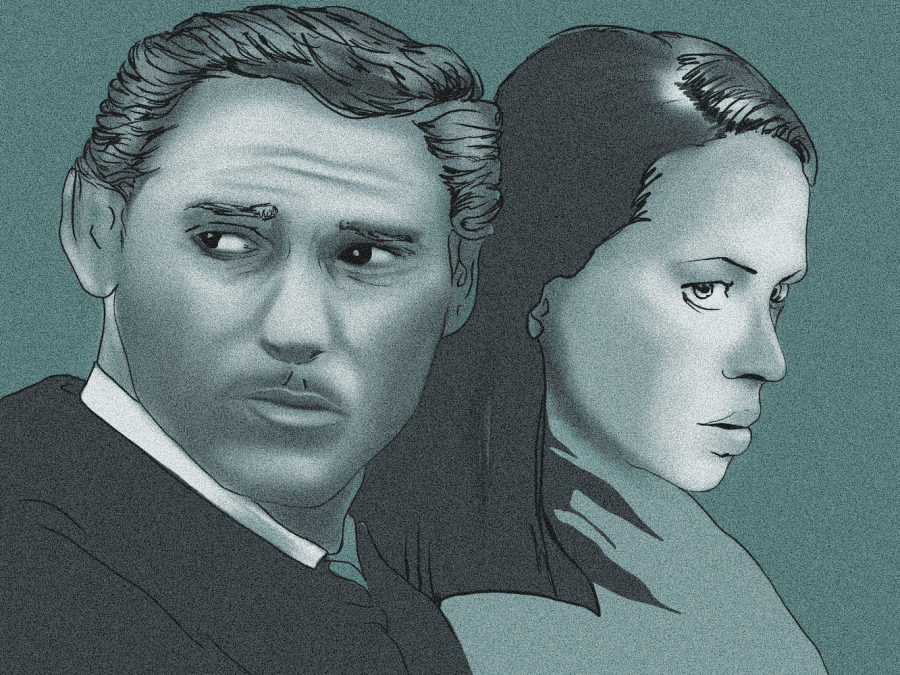Review: ‘Closed Circuit’ fails to examine human condition through its provocative filmmaking
Tal Inbar’s “Closed Circuit,” an international selection at DOC NYC, undermines cinema’s humanist value in exploiting trauma for insincerity and shock value.
Tal Inbar’s “Closed Circuit” documents the 2016 Sarona Market shooting in Tel Aviv. (Illustration by Aaliya Luthra)
December 7, 2022
Tal Inbar’s “Closed Circuit” is about as disingenuous as a documentary can be. This isn’t because of its subject matter or lack of atmosphere, but rather its excessively ferocious presentation. The film provokes the viewer through outrageous editing and bombastic — and oftentimes manipulative — scoring and sound design. The filmmaking does nothing to elevate the seemingly human rhetoric Inbar attempts to communicate. Ultimately, “Closed Circuit” is an immature and inauthentic documentation of trauma and is too scared to let the art form breathe.
“Closed Circuit” is a documentary short about the 2016 Sarona Market shooting in Tel Aviv, which left four people killed and seven injured. The film is a collection of archival footage of the shooting itself, overlapped with interviews with some of its survivors. Inbar aims to detail the psychological and emotional effects of the shooting on their lives.
While the interviews on their own are capable of conveying a raw sense of humanity, Inbar refuses to let those brief moments of empathy live, instead favoring a jarring presentation of the event. She relies on shock and awe from the viewer in order to be effective.
In the interviews and archival footage, Inbar replaces emotional intelligence with crude and appalling editing choices. The blatant and unnecessary rapid cutting strikes are tediously overdramatic and improperly communicate the emotions, feelings and perspectives Inbar is trying to convey.
We watch as the two perpetrators of the shooting march through military checkpoints and the market plaza, with as little context, reasoning and atmosphere provided as possible. Of course, the film’s subject demands a lot of emotional involvement from the viewer, but its presentation nullifies this sense of humanism for the sake of flashy close-ups and eye-rolling technical gimmicks. With how little emotion it conveys, Inbar’s 54-minute film could be cut down to 15 minutes, and very little, if anything at all, would change.
The film’s genuinely ridiculous musical scoring only elevates this sense of dispassion. It seems as though there isn’t a single quiet moment in this film, not even in its superficially introspective interviews. The subjects of the film are communicating their mental and emotional thought processes — detailing their suppression and trauma — and yet the film never allows the viewer to resonate with them. Rather, it forces resonance out of the viewer, whether it be through melodramatic, somber piano music or excessively heightened clumsy sound design. It does not imply any sense of self-awareness, and thus creates an alarming disconnect with the viewer.
Despite having clearly defined humanist goals, Inbar’s intentions aren’t admirable in the slightest. The film is unfortunately an overedited, overscored and overdramatic documentation of a serious subject matter that is devastatingly half-baked. In a year where Laura Poitras’ “All the Beauty and the Bloodshed” and Elvis Mitchell’s “Is That Black Enough for You?!?” make efficient and purposeful usage of documentaries as delicate art, effectively demonstrating why documentary filmmaking matters, “Closed Circuit” goes out of its way to force emotions out of its audience, and ironically, hold them hostage.
Contact Yezen Saadah at [email protected].

























































































































































